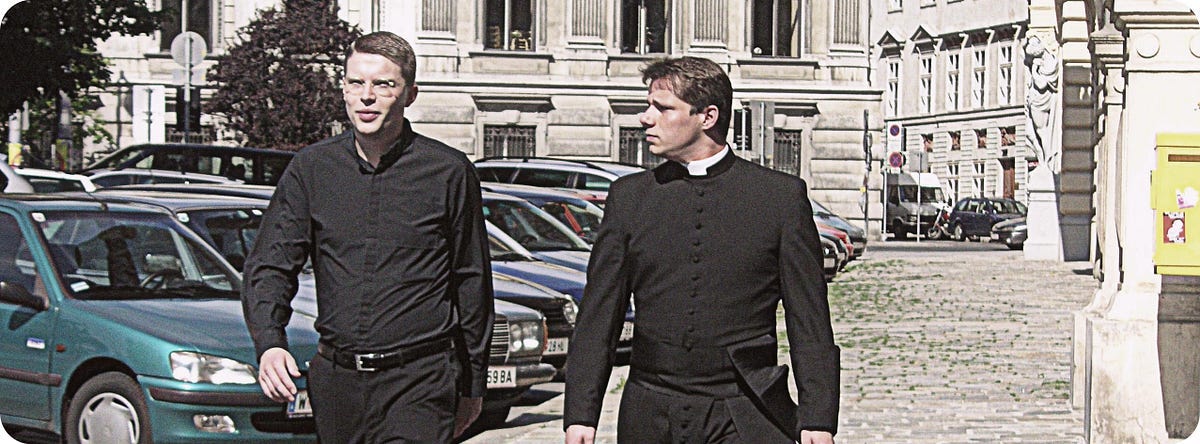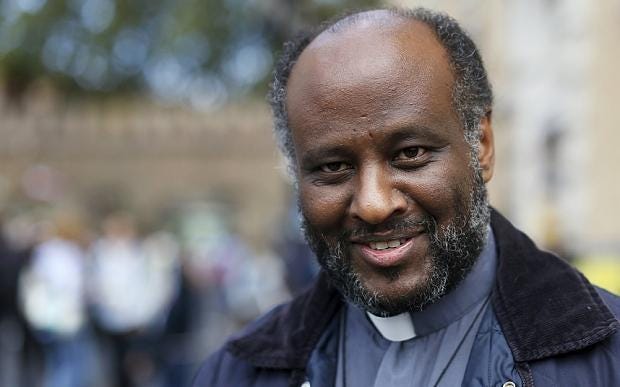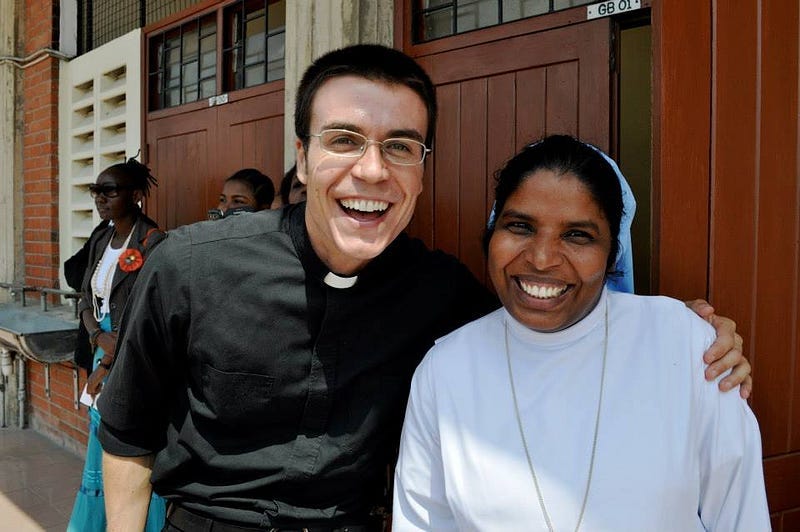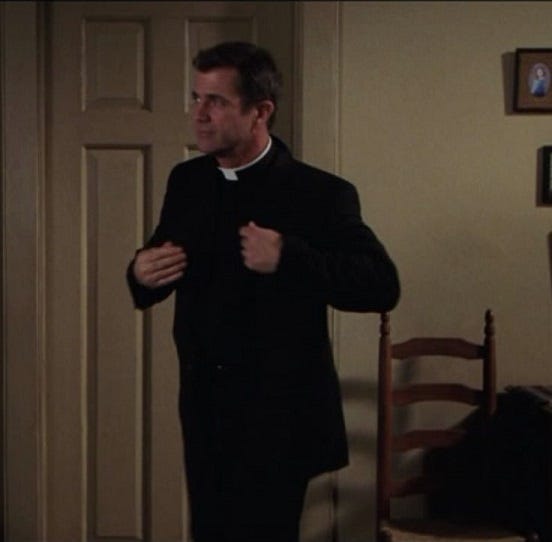Men of the Cloth — Part II
Should permanent deacons in the Catholic Church wear clerical attire? And why does it matter?
Should permanent deacons in the Catholic Church wear clerical attire? And why does it matter?
In Part I, I examined the current norms for permanent deacons in the Roman Catholic Church in the United States regarding clerical dress. To summarize: while deacons are clerics, Canon Law does not oblige them to wear clerical attire. The general norm in the US is for permanent deacons to dress as lay people, while the specific norms set in place by individual bishops vary greatly. In many dioceses, permanent deacons are allowed to wear clerical attire at their discretion.
In Part II I will explore my own thoughts on clerical dress for deacons. I will assume that the deacon is serving in a diocese that allows this option. For the record, I am currently a candidate in formation for the permanent diaconate, employed by the Church in full time ministerial work on a college campus, so the matter of clerical attire for deacons is of personal interest to me. I assume it also is for the reader (otherwise why did you click on the link to get here?).
Why Shouldn’t They?
On the one hand, it is easy to say, “Deacons are clerics, so they should dress like clerics unless the situation demands otherwise. Why is this a big deal?” On the other hand, there are many who are of the opinion that permanent deacons should not wear clerical attire at all. And they have their reasons.
People might mistake them for priests
This is by far the most frequent reason I hear for deacons not wearing clerical attire. And to me it makes the least amount of sense. It is simply not a tragedy if a deacon is greeted with “Good morning, Father.” I imagine any deacon in this situation would extend his hand and say, “Hello, I’m Deacon So-and-so, nice to meet you.”
Anything that can be resolved with a short, friendly conversation is not really an issue in my book. Plus, as more and more deacons are seen wearing clerical attire, this sort of confusion will cease to be a concern.
I think the issue comes from the fact that the only people many have ever seen wearing clerical attire are priests, so it seems odd for anyone who is not a priest to be wearing it. But clerical attire is for clerics and that encompasses bishops, priests and deacons. Bishops wear the collar. Transitional deacons wear the collar. In many seminaries, even seminarians, while still laity, wear the collar. No one seems that concerned about these men being mistaken for priests.
What do people think the danger is here? Someone might accidentally confess their sins to a deacon? Unlikely. Imagine you see a man in a Roman collar walk by. You say, “Excuse me Father, would you have time to hear my confession?” The clerically dressed man says, “Oh, actually I’m a deacon, but Father is in his office. I can take you to him.” See how much of a non-issue this is?
One would presume a deacon in his own parish or place of ministry would be known as a deacon — in fact, wearing the collar would help him to be recognized as a deacon rather than a lay person. Which begs the question — why does no one ever seem to worry about deacons in street clothing being mistaken for laity? Hmm….
Concern over being mistaken for a priest is presumably why some bishops stipulate that their deacons only wear grey clergy shirts. This is to distinguish them from priests who typically wear black clergy shirts. But while the longstanding tradition is for clerical attire to be black, this is not a rule, which is why you sometimes see priests wearing other colors. I saw a photo recently of a cardinal wearing a grey clergy shirt. I wonder if he was concerned people might mistake him for a deacon?
Deacons should look like the people they serve
The idea is that, in solidarity with the people he is serving, the deacon should dress like they do. Plenty of deacons (and priests) feel this way, as do many religious congregations who cast off their habits after Vatican II. But in light of the fact that most of those self-same orders are experiencing a critical lack of vocations, it’s not unreasonable to ask, does dressing like those you serve really work in practice?
The current National Directory for the Formation, Ministry and Life of Permanent Deacons in the United States does specify that deacons “should resemble the lay faithful in dress” — previous editions of this document said that deacons should dress “like those they serve.” This led many deacons to joke that perhaps they should dress like bishops, since they served the bishop. Should deacons in prison ministry wear orange jumpsuits? Should I, as a campus minister, start dressing like a college student? How far does this go?
Allow me to share an anecdote. I knew a man once who was an Episcopal priest. At one point in his career, he started a ministry to bikers. In solidarity with them, he started wearing leather vests with biker patches. He started wearing dew rags. He got his ears pierced. He got tattoos. How effective was his ministry to the bikers? I have no idea. But his personal life and behavior took a decidedly downward turn during that period. He was appropriating their culture, rather than infecting it with the light of Christ. He was losing his identity as an Episcopal priest.
How we choose to clothe and carry ourselves is often a reflection of what lies within. They say, “dress for the job you want,” precisely because how we dress can strongly affect our attitude and outlook. The deacon — any ordained minister — is meant to be a sacramental icon of Christ. He should look distinctive. His habit of dress should reflect his habit of life, which should not be that of the world. Although some hold the opinion that wearing clerical attire is “off-putting” and wearing lay clothing makes the cleric “more approachable,” my experience suggests the contrary. Almost every habited nun I have met has stories about strangers in public asking to hug them — tell me how that is “unapproachable.”
Clerical attire is a vanity
The outer trappings of clerics are attractive to many. For some they are a symbol of power; for others, a symbol of piety and holiness. People can be attracted to clerical dress for good or bad reasons. So it would be wrong to ascribe any and all preference for clerical attire to vanity. In fact, in many cases it may well be the opposite.
Consider how I, as a lay person, typically get dressed on Sunday morning. I choose from half a dozen shirts of different colors and styles. I select a tie from my small collection of many colors and patterns. I need to select a pair of slacks. What color? Do I wear the black or brown belt? It should match my shoes, so I need to decide which pair to wear — not to mention what socks. I need to select a jacket, and maybe add a pocket square of a complementary color. The whole outfit needs to look good together. Before anyone accuses me of being a clothes horse, let me assure you that most of these items came from thrift stores and my wardrobe is actually quite modest — however, even a lay person’s modest wardrobe affords a lot of room to express personal style. Each of these choices is made with an eye toward how I look and feel on that particular day.
Now, imagine I am a deacon or priest getting dressed to go to the parish on Sunday morning. I put on a cassock. I’m done.
What do I put on underneath the cassock? It doesn’t matter. No one will see it. The cassock covers me from my neck to my ankles. The full covering of the cassock is a symbolic suppression of the individual in favor of the clerical office. In a less obvious way, the black clerical suit does the same. It leaves little room for personal taste and style. The cleric must deny himself and put on Christ. Far from being an occasion of vanity, the whole point of clerical attire is to be humbling.
Deacons are not “real” clergy
I ran across a comment in an online forum from someone in a diocese where permanent deacons were not allowed to wear clerical attire. She speculated it was because “the bishop didn’t want people associating the permanent deacons with the clergy because their formation was so horrid.” That comment is troubling on several levels. First of all, deacons are clergy, whatever their formation was like. They may be poorly formed clergy, but clergy they are. Secondly, if the situation she describes regarding their formation is true, the solution is to improve their formation — not deny them the right to wear clerical garb. In fact, one may argue that encouraging the deacons to look like clerics may be a step toward helping them to act like clerics.
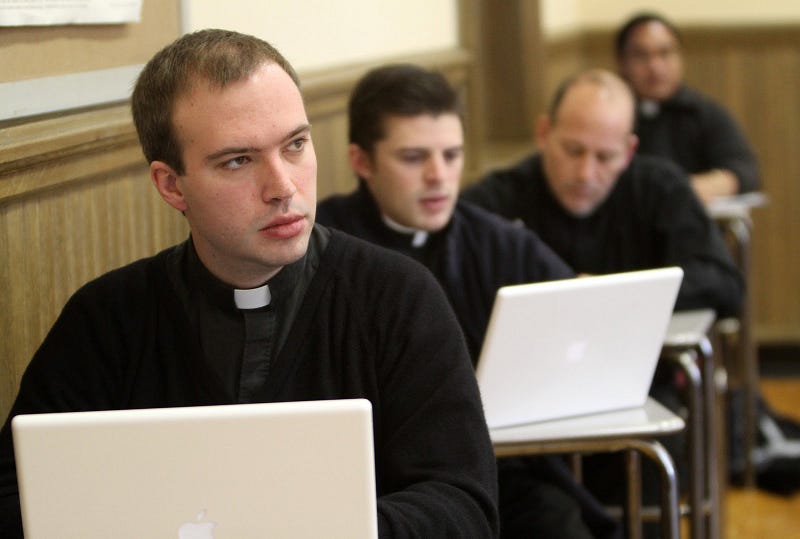
Another blog post I came across suggested permanent deacons shouldn’t wear clerical attire because their formation was less than that of priests, as if the Roman collar were something you earned by graduating from seminary. If you expect permanent deacons to have the same level of formation as priests, then your expectations are wrong.
Are some deacons poorly formed? Yes. Does this mean they are not real clerics? Not at all. The solution to is to have better formed deacons out there ministering in the Church — not to have deacons dressed as laity.
Why Should They?
I’ve looked at some reasons why people think permanent deacons ought not wear clerical attire, and the false assumptions behind many of them. But the more important question is why should a deacon wear clerical attire?
A deacon is a cleric
This one is obvious, and I’ve made the point already; but it’s an important point, so I’ll make it again. A deacon is a cleric (Can. 266 §1). And clerics, generally speaking, should dress as clerics (Can. 284). Canon Law does not oblige permanent deacons to wear clerical attire (Can. 288). But “not obligated” is not the same thing as “forbidden.” It seems to me that the default position for a cleric is to dress like a cleric unless there is some genuine reason not to.
A visible sign in the world
All who are in Holy Orders — deacon, priest or bishop — are sacramentally formed to Christ in a particular way. They are meant to be the continuation of the Incarnation in time, the visible hierarchy of the Church bringing Christ into the world.
This is not simply the role of the priest when he presides at Mass. This is the role of every ordained clergyman in all aspects of his life. Ordination to the diaconate makes one an official minister of the Church. Wearing clerical attire helps the deacon to be identified as such when he is out in the world.
An Eastern Orthodox priest shared an experience that happened to him and a visiting Roman Catholic priest friend of his while walking together downtown one evening. The Orthodox priest was dressed in his clerical attire, whereas the Roman Catholic priest, on vacation, was dressed in street clothing. A man came up to the pair of them and began talking to the Orthodox priest. He was in a desperate situation and asked for the priest’s blessing and prayers. The priest was happy to offer both, and the man went on his way, spiritually consoled. After he left, the Roman Catholic priest wondered why the man didn’t ask for his prayers. The Orthodox priest looked at what his Roman friend was wearing and said, “You know why.”
Early in our formation experience, we had an opportunity to talk with a panel of permanent deacons serving in our diocese. All of them had stories about strangers in public approaching them to ask for prayers or spiritual guidance because they saw the collar. None of those opportunities to minister to others would have arisen had the deacons been in regular street clothing.
The experiences are not always positive. One deacon told of a time he was walking down the hallway of a hospital after bringing Communion to a sick parishioner. A man saw his collar and stopped him. He began to spew all sorts of venom about the evils of the Catholic Church and how corrupt the clergy are. This man was full of anger. The deacon stood there and took it. He listened to the man, apologized for any wrong that may have been done to him in the name of the Church, and offered His prayers.
Wearing the collar in public isn’t about receiving adulation. It means you have to be willing to be persecuted for the sake of Christ (Mt 5:10; 2 Tim 3:12).
If you are insulted because of the name of Christ, you are blessed, for the Spirit of glory and of God rests on you. — 1 Peter 4:14
Vocational Identity
Earlier I referenced the maxim, “dress for the job you want.” Someone who is called to serve in the military should get a kick out of the uniform. Someone called to be a chemist shouldn’t mind wearing a white lab coat. A lawyer shouldn’t show up in court wearing exercise clothing. The outfit is not the whole of the vocation, but it is a part of the vocation. How we clothe ourselves is part of our identity. Hollywood film makers know this.
In Signs by M. Night Shyamalan, Mel Gibson plays an Episcopal pastor who is suffering a vocational crisis after the death of his wife. We never see him wearing clerical attire except in flashbacks, until the very end of the movie when, in a very touching moment, we see him getting dressed in front of his bedroom mirror, putting on his clerical collar. No one can miss the significance of that simple act. He’s experienced healing and is ready to live his vocation once more.
We see this also in Calvary, by John Michael McDonagh (see my review here). It stars Brendon Gleeson as a persecuted Catholic priest. He wears the cassock throughout, except in one scene where he is considering abandoning his troubled parish. Then we see him in the airport wearing street clothes. Again, the signal is clear — his clerical identity is slipping. When we see him again in the cassock, we know his resolve has been renewed and he is once more ready to face persecution in the name of Christ.
Humility
Deacons, just like all clergy, are called to live a simple lifestyle. Clothing is part of that. Clerical attire helps maintain simplicity in dress by greatly suppressing the opportunity for individual expression.
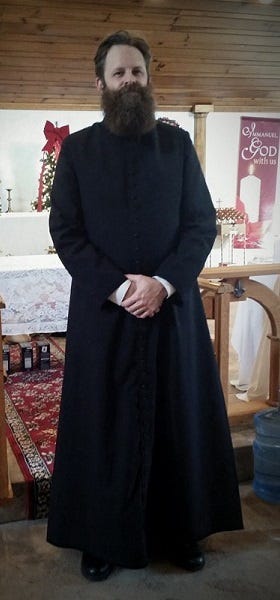
Unless you intentionally maintain a very minimal wardrobe, dressing as a lay person is always going to present more options than dressing as a cleric. You dress based on matters of personal taste and style and a concern for your appearance. This is not a bad thing, but wearing clerical attire greatly simplifies things and minimizes the temptation for vanity.
Look — I don’t like wearing black. I have two pairs of black pants (one that used to fit me and one that I hope still fits me now), which I hardly every wear. I have exactly one black shirt that is also rarely worn. And I never wear them together. Left to my own desire, I would never wear an all-black outfit. That’s me and my tastes. But as a member of the clergy, I will wear an all-black outfit. Because it’s not about me. It’s about conforming myself to my vocation and being identifiable to the people I serve.
“He must increase, but I must decrease.” — John 3:30
Kenosis
There is a Greek word, kenosis, which means “self-emptying.” It’s the word used in Phillipians 2:7, where St. Paul speaks of Christ humbling himself. Effective ministry requires this kind of self-emptying so that the minister may present Christ to those he serves rather than himself.
The way I see it, there are only two reasons a deacon (or any cleric) should wear clerical attire, which actually amount to one single reason.
For HIMSELF: as a reminder that his vocation is to serve Christ and be an official representative of the Church.
For OTHERS: as a reminder that his vocation is to serve Christ and to be an official representative of the Church.
Men of the Cloth — Part I
What are the rules regarding clerical attire for Catholic deacons in the United States?


